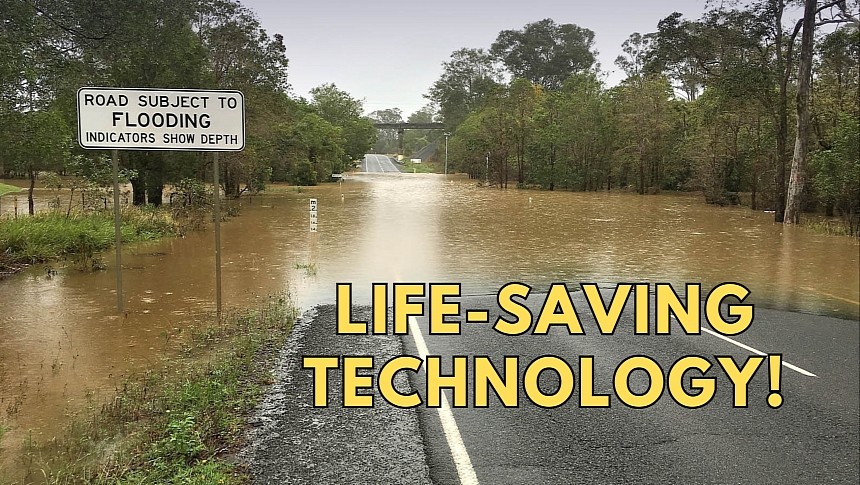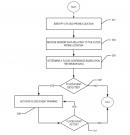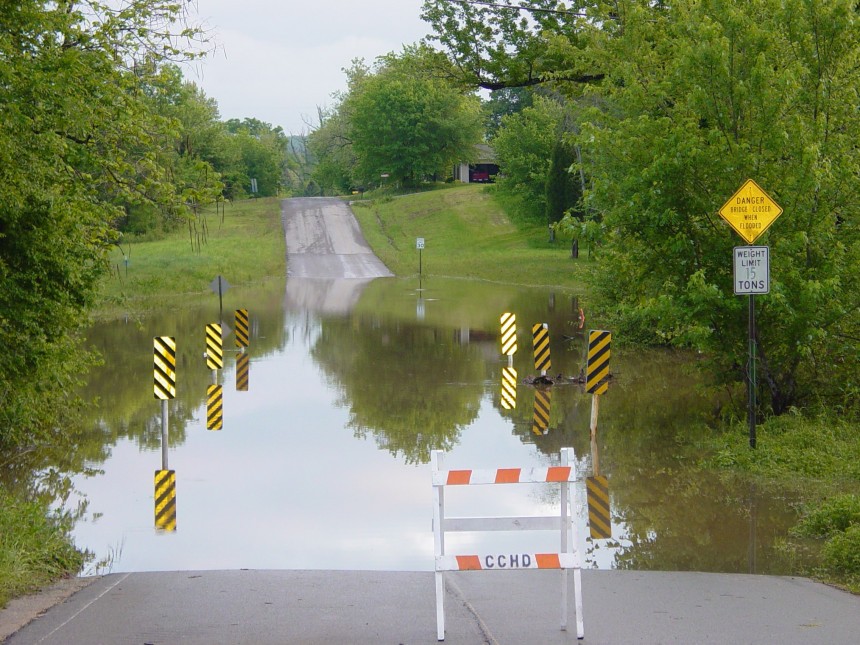You’d think predicting the weather and getting an accurate forecast is easier in 2023, given the technology and systems we have today, but this is not the case.
Weather is still unpredictable, so the forecasts we see on TV or get from a mobile app are often a hit-and-miss.
Drivers are affected by rapidly changing weather conditions, as heavy rain, for instance, makes every little trip significantly more dangerous.
Applications like Waze lend us a hand and make every minute behind the wheel more predictable. Users can report flooded roads so other motorists receive a warning when approaching a flagged location. This method allows them to slow down in advance and use a different route with safer driving conditions.
HERE, a company whose products serve as top Google Maps and Waze alternatives, recently patented a new system with a clear and critical purpose. The feature is called "method and apparatus for generating a flood event warning for a flood-prone location" and describes an automated system to detect flooded roads and then generate notifications for nearby drivers.
Before delving into more details about how the system works, let's discuss the importance of this type of technology.
HERE explains the current implementations, including navigation apps like Waze, provide drivers with warnings on flooded roads, but the system only works as someone uses the same route. A crowdsourced system involves a driver going on a flooded road and then letting others know about it. As a result, at least one vehicle uses the flooded roadway, facing significant risks.
HERE's technology relies on vehicle technology to detect flooded roads. Onboard systems like cameras, LiDAR sensors, and any equipment that can detect a flooded road play a critical role.
The concept starts with determining flood-prone locations. HERE says it must build a database of roads prone to floods. To do this, it collects information from vehicles on the road, but the database can expand using historical details and past incidents. A flooded roadway is added to the database, so the next time heavy rainfall occurs, HERE's technology can predict whether flooding is possible with high accuracy.
Once the database is complete, the system can analyze various information sources to determine weather conditions and rainfall to calculate flooding chances. The sources can be multiple, including the same vehicle sensors (as onboard cameras can record road footage and upload it for additional processing on HERE's servers) and official government repositories. Eventually, the system can automatically compare the existing database of flood-prone locations with the live information it receives, estimating the likelihood of drivers encountering dangerous locations.
When the analysis is complete, HERE can proceed to the next step. It involves generating a warning and sending it to nearby drivers.
The system works like a typical navigation app, as the notification is forwarded in proximity based on their location. Furthermore, HERE's technology can analyze drivers' routes and send warnings if they go through the flagged locations. In some embodiments, navigation software can calculate alternate routes to avoid the flooded roadway, sending drivers on roads with a reduced risk of similar problems.
Eventually, HERE aims to help drivers avoid locations with potential safety issues associated with driving through a flood location, but the same technology can also help autonomous vehicles. HERE is one of the companies already investing in software built with self-driving cars in mind. Hence, this solution helps this new vehicle category avoid regions where they could encounter difficulties due to heavy rainfall.
While the concept sounds very helpful for every driver on the road, I think HERE's main challenge would be determining a flood confidence for a flagged location. While the navigation expert wants to build a completely automated solution, an easier way to obtain higher accuracy is to involve human input, at least to confirm flooded regions.
HERE could conduct its complete analysis and determine a potentially flooded road but then ask for confirmation from drivers already on the road. Once a certain number of users confirm the report, helping the flood confidence reach a pre-configured threshold, HERE can establish with higher accuracy that drivers must receive warnings of potential safety issues in the region. The system uses a wide variety of sources to obtain higher accuracy, but regardless of the approach, the human factor remains the only one that can guarantee higher confidence.
At this point, HERE's technology is still in the patent stage, so it could take a while before the company brings it to the mass production stage. HERE focuses heavily on next-generation technology specifically developed for self-driving vehicles, so while this technology might seem just a concept that'll never get the green light, I think the company is very serious about building an automated reporting system requiring zero human interaction. Eventually, it's probably just a matter of time until HERE comes up with a solution to turn road incidents into an automatic process handled completely by our cars.
Drivers are affected by rapidly changing weather conditions, as heavy rain, for instance, makes every little trip significantly more dangerous.
Applications like Waze lend us a hand and make every minute behind the wheel more predictable. Users can report flooded roads so other motorists receive a warning when approaching a flagged location. This method allows them to slow down in advance and use a different route with safer driving conditions.
HERE, a company whose products serve as top Google Maps and Waze alternatives, recently patented a new system with a clear and critical purpose. The feature is called "method and apparatus for generating a flood event warning for a flood-prone location" and describes an automated system to detect flooded roads and then generate notifications for nearby drivers.
Before delving into more details about how the system works, let's discuss the importance of this type of technology.
HERE explains the current implementations, including navigation apps like Waze, provide drivers with warnings on flooded roads, but the system only works as someone uses the same route. A crowdsourced system involves a driver going on a flooded road and then letting others know about it. As a result, at least one vehicle uses the flooded roadway, facing significant risks.
HERE's technology relies on vehicle technology to detect flooded roads. Onboard systems like cameras, LiDAR sensors, and any equipment that can detect a flooded road play a critical role.
The concept starts with determining flood-prone locations. HERE says it must build a database of roads prone to floods. To do this, it collects information from vehicles on the road, but the database can expand using historical details and past incidents. A flooded roadway is added to the database, so the next time heavy rainfall occurs, HERE's technology can predict whether flooding is possible with high accuracy.
When the analysis is complete, HERE can proceed to the next step. It involves generating a warning and sending it to nearby drivers.
The system works like a typical navigation app, as the notification is forwarded in proximity based on their location. Furthermore, HERE's technology can analyze drivers' routes and send warnings if they go through the flagged locations. In some embodiments, navigation software can calculate alternate routes to avoid the flooded roadway, sending drivers on roads with a reduced risk of similar problems.
Eventually, HERE aims to help drivers avoid locations with potential safety issues associated with driving through a flood location, but the same technology can also help autonomous vehicles. HERE is one of the companies already investing in software built with self-driving cars in mind. Hence, this solution helps this new vehicle category avoid regions where they could encounter difficulties due to heavy rainfall.
HERE could conduct its complete analysis and determine a potentially flooded road but then ask for confirmation from drivers already on the road. Once a certain number of users confirm the report, helping the flood confidence reach a pre-configured threshold, HERE can establish with higher accuracy that drivers must receive warnings of potential safety issues in the region. The system uses a wide variety of sources to obtain higher accuracy, but regardless of the approach, the human factor remains the only one that can guarantee higher confidence.
At this point, HERE's technology is still in the patent stage, so it could take a while before the company brings it to the mass production stage. HERE focuses heavily on next-generation technology specifically developed for self-driving vehicles, so while this technology might seem just a concept that'll never get the green light, I think the company is very serious about building an automated reporting system requiring zero human interaction. Eventually, it's probably just a matter of time until HERE comes up with a solution to turn road incidents into an automatic process handled completely by our cars.










